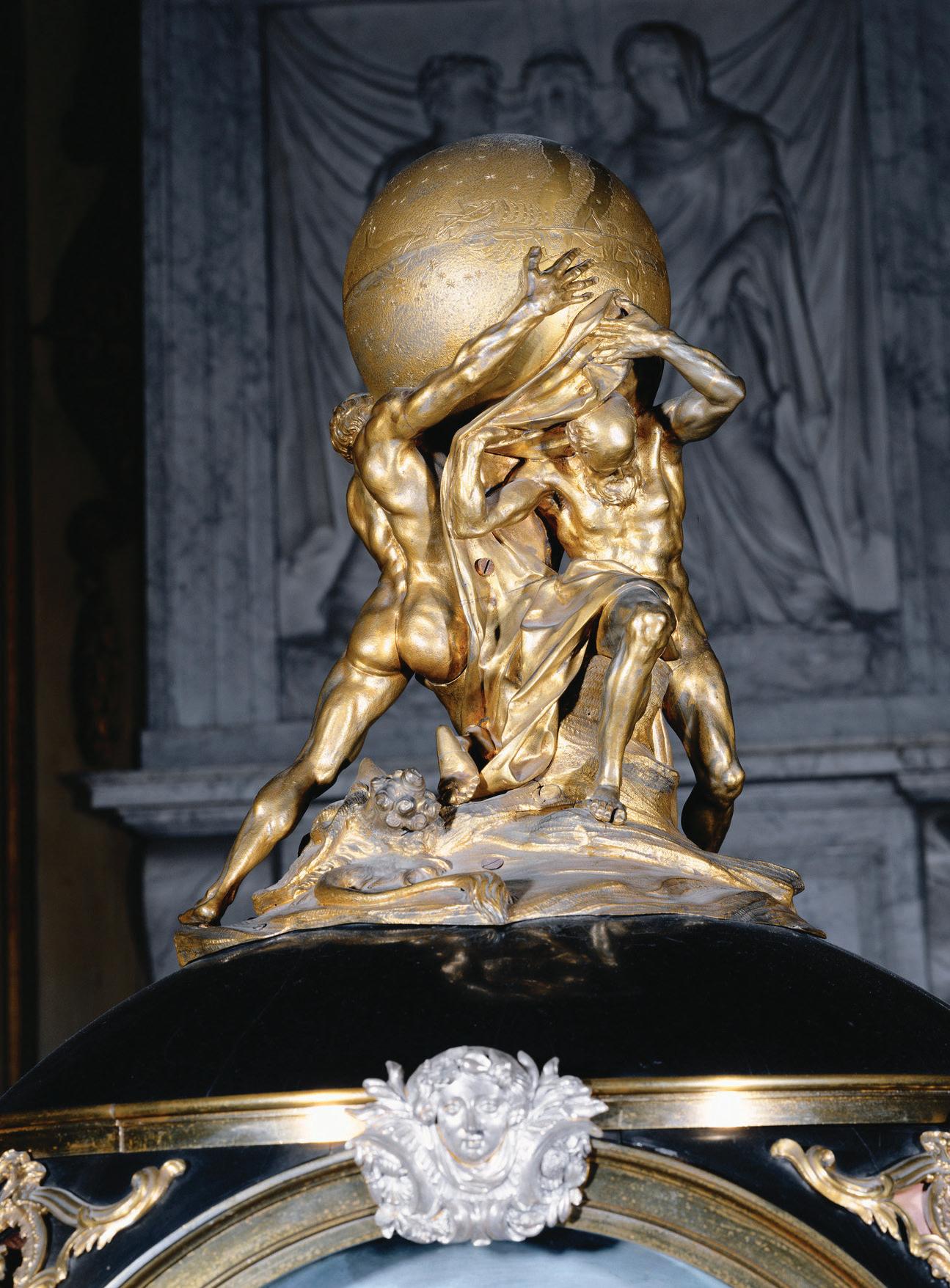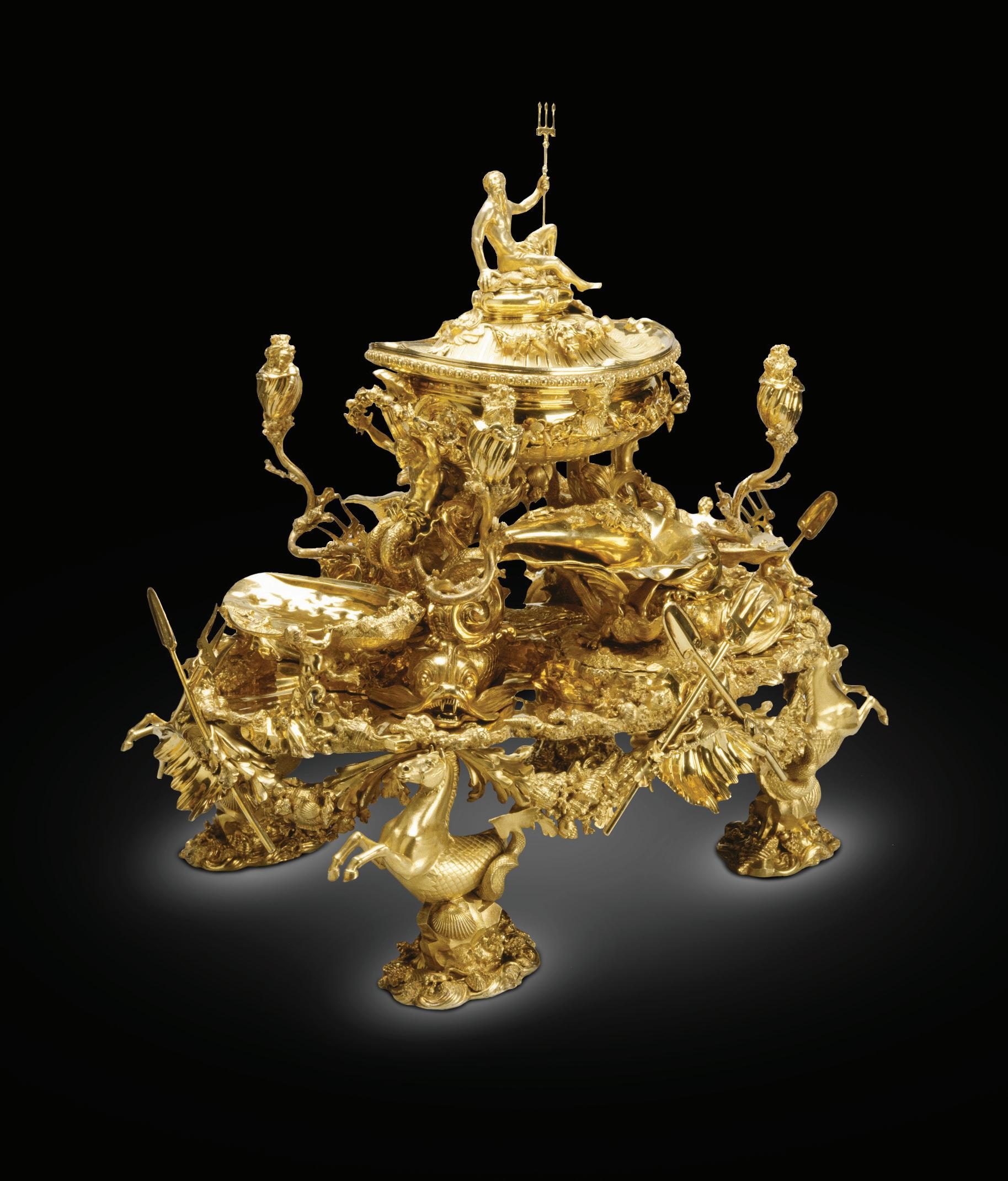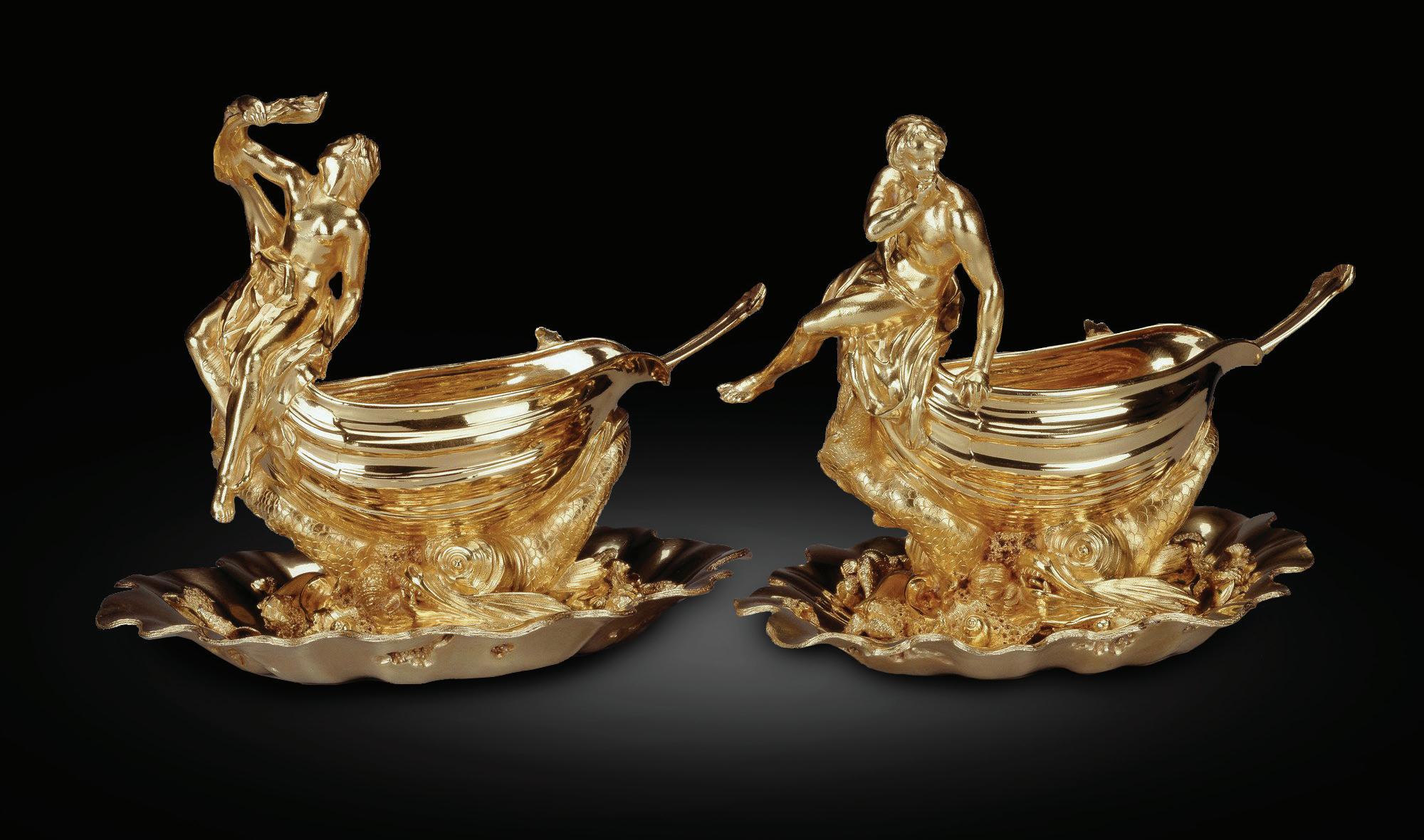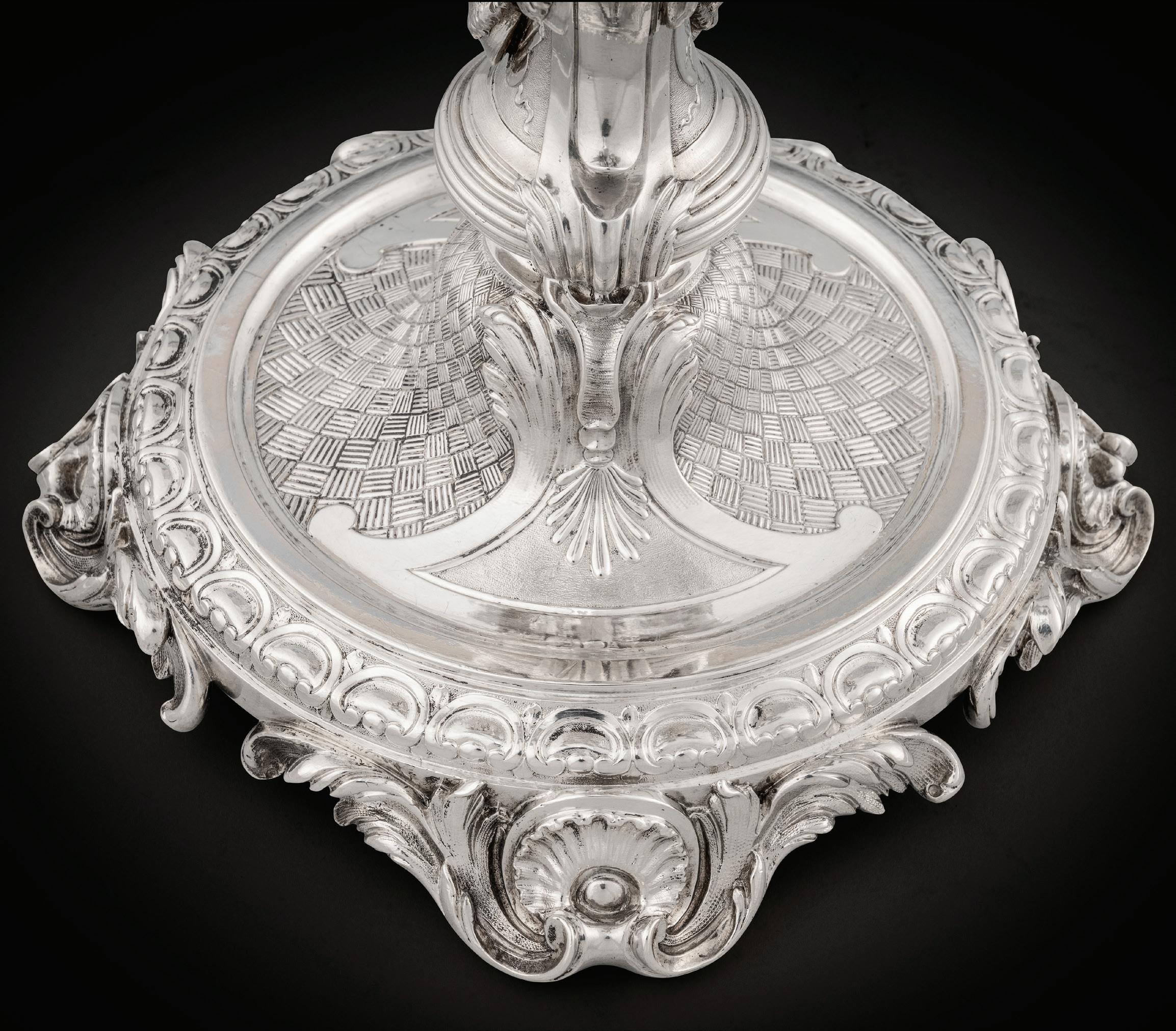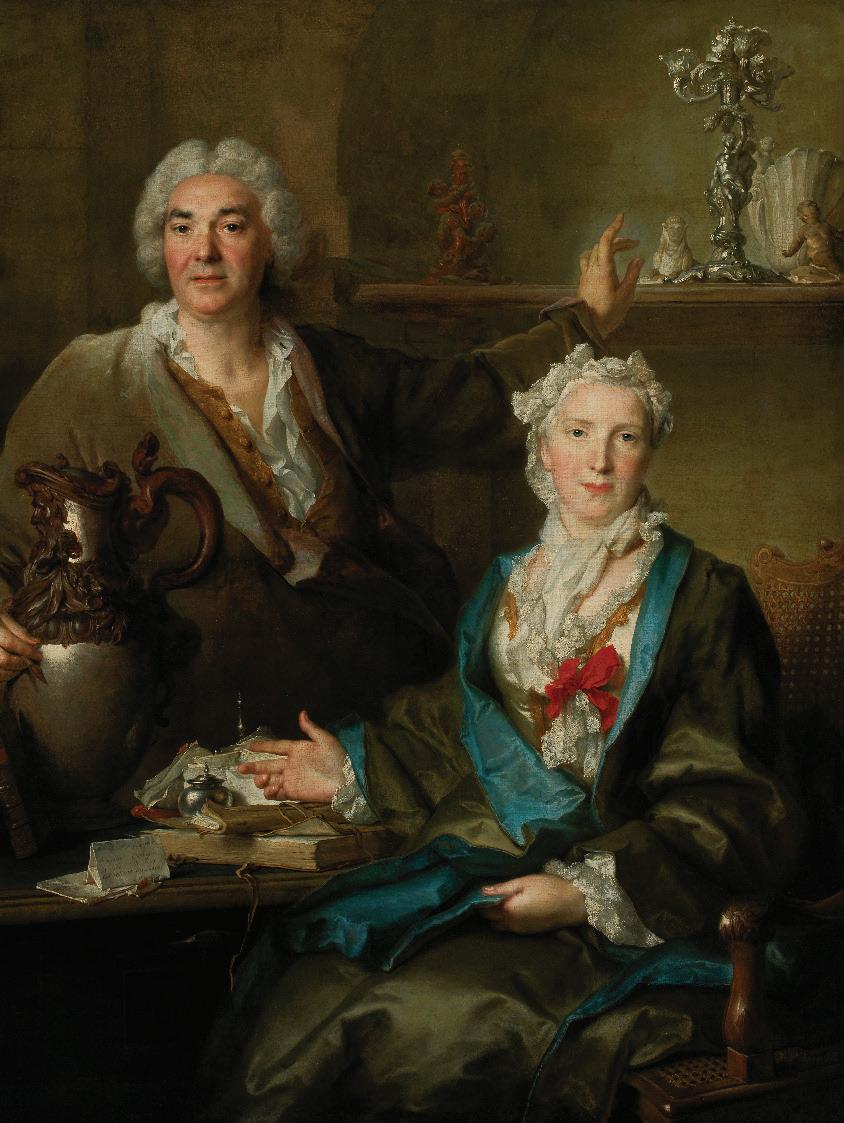
3 minute read
The design for the Candelabra
Kildare’s sophisticated candlesticks with stems formed with figures of a nymph and satyr were supplied by London goldsmiths, one pair, those illustrated here, were marked for George Wickes; the other for John Hugh Le Sage. Wickes’s Gentleman’s Ledger records delivery to the Earl of Kildare on 27 May 1745: ‘fine chais’d candlesticks & branches & false nozils,’ 308oz. 12dwt. at a cost of the silver (£95 3s. 6d.) and fashioning (10s. per oz.), totalling £154.’ The figurative stems spiral with a fluidity which denies the rigid silver with which they are formed; the branches spring from the stem with effortless verve. The domed bases, chased with panels of basket-weave and reserves of shells on a matted background, rest on leaf-flanked shell feet. The oak-festooned sconces are chased with rococo cartouches. The detachable three-light branches with swirling berried foliate arms support multiple-petalled sunflower sconces. The figures of the nymphs pursued by satyrs provide a Rococo complement to the Baroque stucco gods and goddesses on the Carton dining room ceiling. These candelabra are identical to a pair that French royal goldsmith Thomas Germain made in Paris in 1732-3 for the 4th Earl of Dysart (1708-1770) for use at Ham House, Richmond. Now in the Detroit Museum of Fine Arts as part of the Firestone Collection, Kildare’s London-made versions may have been copied from those owned by Lord Dysart. In the
1736 portrait of Germain with his wife painted by Nicolas de Largillière in Paris, this candelabra model is proudly displayed in the background. In 1748 Germain produced a gold candelabra with sockets based on the calyx and petals of the sunflower for Louis XV. Germain supplied three other similar pairs; two pairs for the PenthièvreOrléans service, 1733-4 (one pair were recorded in a private collection; the location of the other pair is currently unknown). Another pair delivered in 1757 in Lisbon for King Joseph I had feet marked for Thomas Germain, 1734-5 and all other parts with marks for François Thomas Germain, 1756-7. (Formerly in the collection of George Ortiz, these were sold Sotheby’s 13 November 1996). Published in Paris in 1738-9 in ‘Livres de Chandeliers de Sculpture en Argent’ engraved by Gabriel Huquier, candlesticks to this design were ordered by Francophile Duke of Kingston from Meissonnier in Paris in 1737. Other versions produced in London in the 1740s were marked by Paul de Lamerie and Thomas Gilpin and in the 1750s by Edward Wakelin. This successful design remained in demand in Britain and Europe. Parker & Wakelin (Wickes’ successors) made a pair in 1770, now in the Fairhaven Collection at Anglesey Abbey. A further pair was supplied by Paul Storr for Rundell, Bridge & Rundell in 1816 for the Duke of Leeds.
Advertisement
In 1747 James Fitzgerald married Emily, younger daughter of the 2nd Duke of Richmond, a leading presence at the Hanoverian court. Emily grew up at Richmond House, Whitehall and at Goodwood, West Sussex, under the mature eyes of her French great grandmother Louise de Kerouaille, a former mistress of Charles II. Emily took a lively interest in art, contributing to the decoration of a shell house at Goodwood, and later overseeing the creation of its equivalent in the grounds at Carton.
The Kildare Candelabra thus epitomize FrancoBritish Rococo taste. Forming the human figure into the stem of a candelabra reflects the contemporary focus on life drawing in the London and Paris Art Academies. Yet only the informal St Martin’s Lane Academy permitted drawing from the female model; the novelty had attracted the interest of the Prince of Wales, future George II, in 1722. Such opportunities were only introduced in Continental Europe after the French Revolution.
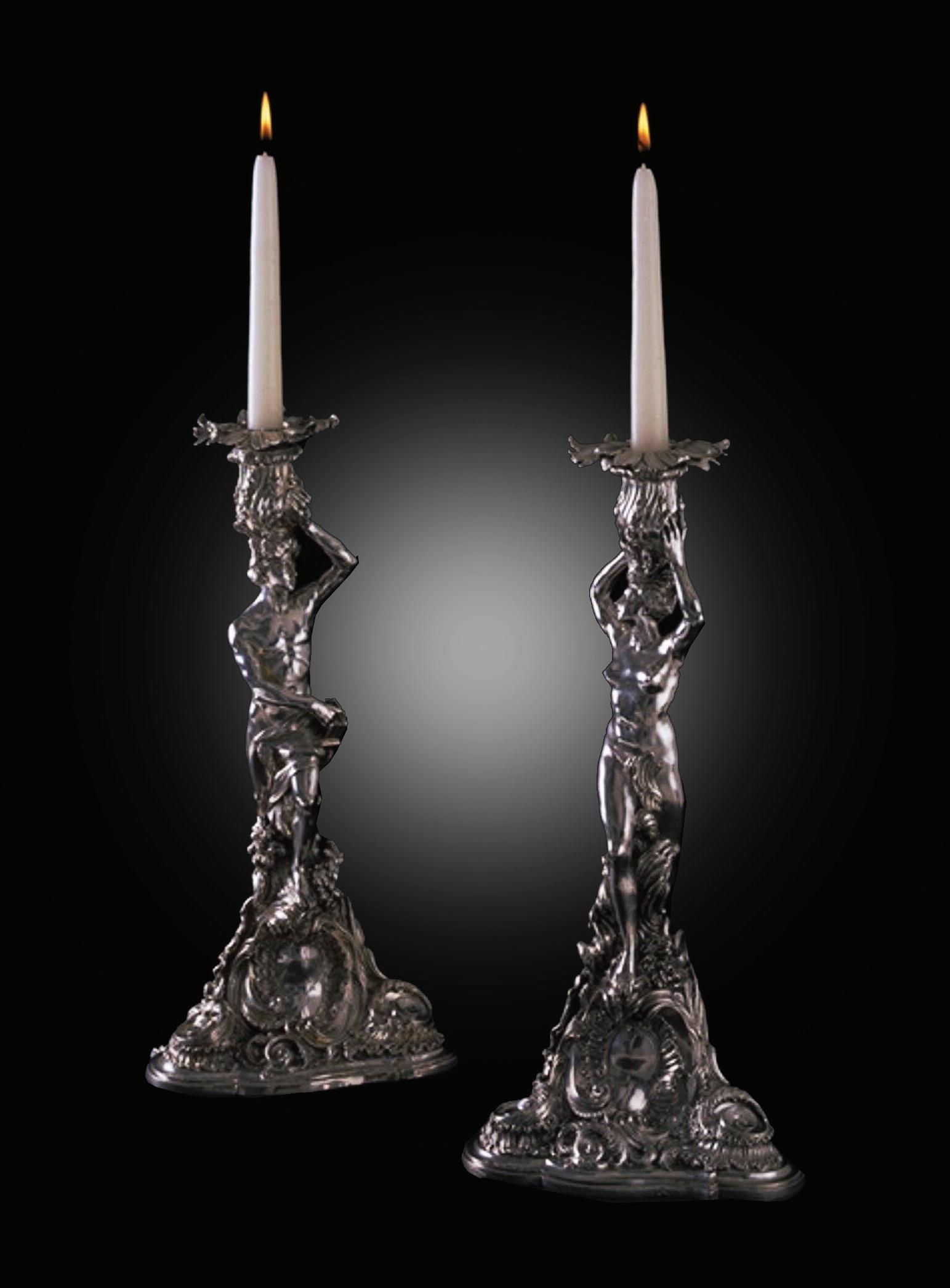
The design and candlesticks modelled by George Michael Moser, circa 1740, now in the V&A, incorporating single figures of Apollo and Daphne, reflect his teaching in St Martin’s Lane where his fellow tutor was the French-trained sculptor Louis François Roubiliac. Although separated as two candelabra, the conceit of Apollo’s pursuit of Daphne unites the pair.
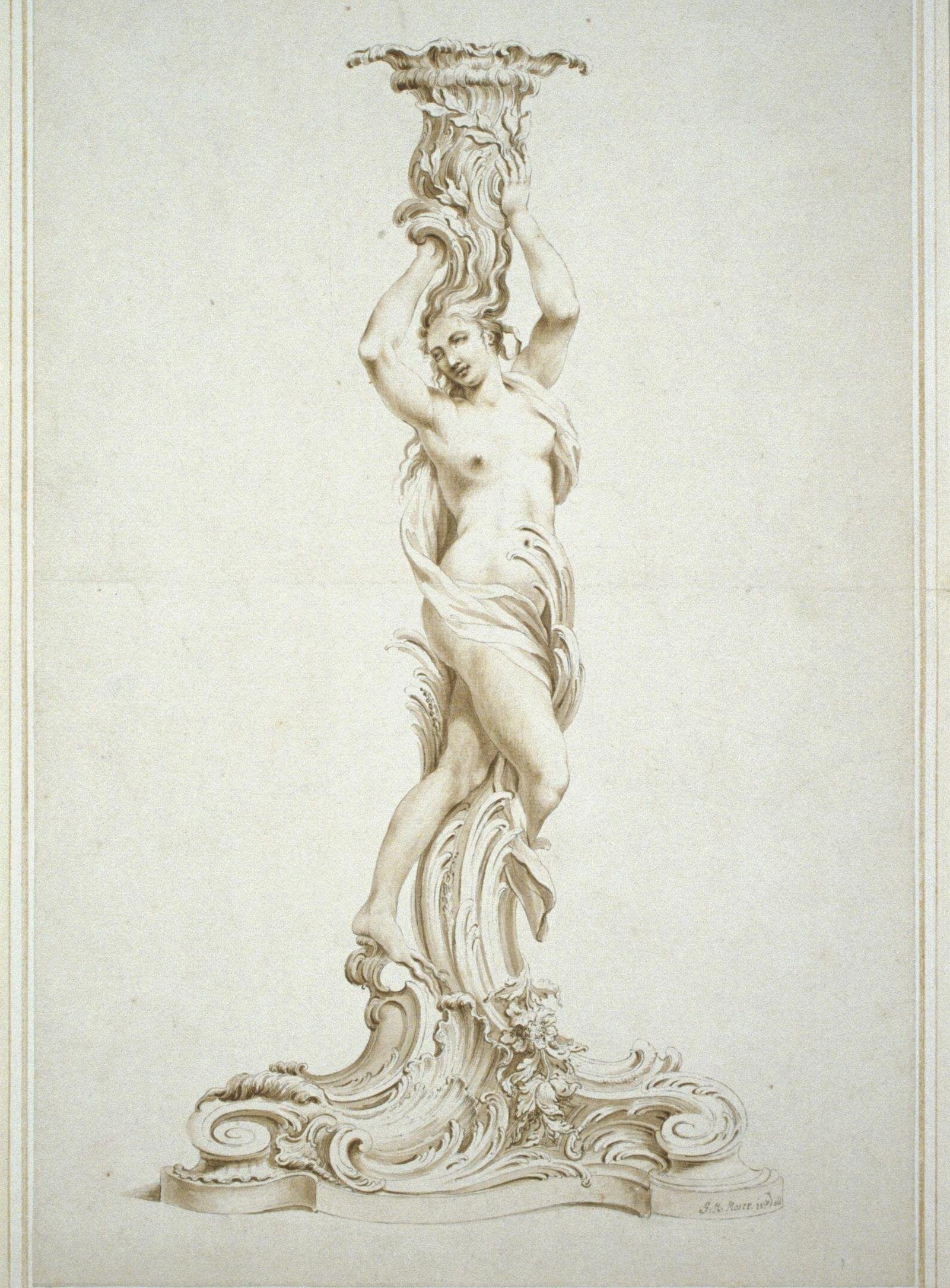
By 1743, Roubiliac was providing figurative models for bronzes to furnish sophisticated musical clocks, including interactive figures of Hercules and Atlas and seated figures representing the Four Grand Monarchies, Europe, Persia, Africa and America. Roubiliac may have also provided models for the figures of Venus and Adonis which adorn the silver sauceboats supplied by Nicholas Sprimont for Frederick, Prince of Wales’s Neptune dinner service.

By 1745, the Chelsea Porcelain Manufactory was established by Liège goldsmith Sprimont in partnership with Dieppe jeweller Charles Gouyn. Chelsea porcelain figures were modelled and cast in the round as decoration for the dining table, replacing sugar sculpture that had served a similar purpose in the 17th century. In silver, the burnished surface of the sculpted human figures reflected the candlelight and provided a lively diversion for those dining with Kildare at Carton or Leinster House.
